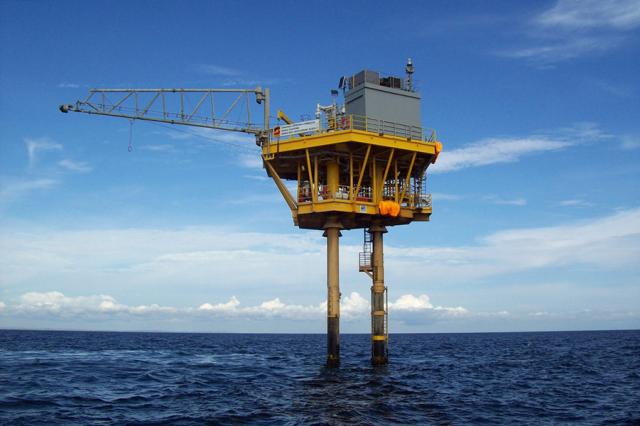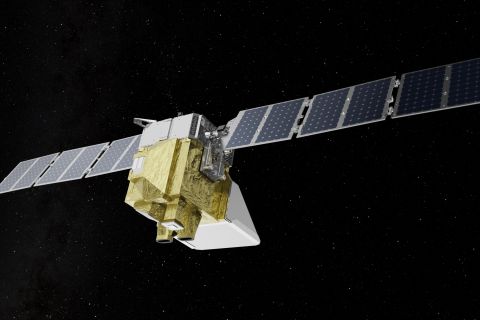
Using well conductors as the structural support for the topside, Sea Swift minimizes build and implementation times. (Source: Aquaterra Energy)
[Editor's note: This story originally appeared in the April 2020 edition of E&P. Subscribe to the magazine here.]
Natural resources, such as oil and gas, can bring huge wealth to a country or region and be the driving force behind economic development. In Latin America, oil and gas have consistently been at the forefront of state economic policy over the last 20 years, and it is easy to understand why. With a 20% share of global proven oil reserves and almost 5% of natural gas reserves, the region is a growing force within the global hydrocarbon industry.
However, change is afoot. Latin America is a region in transition. Changes in government policy mean that state-owned oil companies such as Pemex are now exposed to increased competition. For example, fields in the Campos Basin, whose marginal, shallow-water plays are ripe for redevelopment, have already been sold to a number of small-cap players. Petrobras also announced in the summer of 2019 that it was opening up the Brazilian market by selling $11 billion of assets, including $1.5 billion of shallow-water fields. This market deregulation has been accompanied by divestment by the supermajors, leading to the emergence of a new generation of ambitious, smaller operators that are ready to take advantage of these opportunities.
New kids on the block
The shallow-water fields that have been the subject of these sell-offs may be smaller, but their contents are no less valuable than fields farther offshore. They also might be faster to develop and at a lower cost than comparable deepwater options, making them an ideal choice for new small-cap players.
Smaller operators tend to have a number of benefits that can give them a strategic advantage. Many have nimble decision-making processes, allowing them to act quickly to develop, explore and adapt to changing business and investment conditions. They also typically have a lower overhead burden, allowing fields with smaller levels of recoverable reserves to still be developed in a competitive manner.
This combination of attractive development opportunities and smaller companies eager to succeed means that the region is set for a major expansion in shallow-water development activity.
But what will this mean for the supply chain? Smaller companies often have a more limited in-house technical capacity and management bandwidth, so partnering with platform design and riser analysis experts will be key to ensuring successful project outcomes.
Crucially, these independent companies are often backed by financial institutions or private equity, for which a fast return on investment is key. In turn, this encourages increased appetite for faster, leaner operational and supply chain options. It is to that end that these smaller operators are looking to forge a new relationship dynamic with the supply chain, one based on true collaboration and cooperation as opposed to supply based on a tick-box procurement exercise.
One area where this is of particular relevance is in the design and procurement of offshore platforms due to local fabrication yard restrictions, logistical considerations and the availability of local skilled workforces.
Offshore platform design
Aquaterra Energy believes the industry will increasingly see nice-to-have options removed from offshore platform design with the focus being on lean plans, value for money and must-have requirements right from project inception. This will have a fundamental impact on many project decisions including the platform choice itself. For example, smaller, fit-for-purpose, modular and lower cost alternatives will become the order of the day in contrast to large custom-designed conventional jackets.
Aquaterra Energy’s Sea Swift conductor-supported offshore platform is a low-cost platform that is ideally suited to this new commercial environment. Its modular design means that it can be adapted easily to suit individual requirements. Sea Swift’s ability to be installed by jackup rig rather than by expensive crane barge has the potential to save project developers tens of millions of dollars in installation costs. This all leads to reduced capital costs, reduced payback time and increased internal rate of return. Developments that were previously uneconomic become viable, and those that were already viable can provide even greater returns.
Modular design and build
As well as the cost savings inherent with modular platform design, Sea Swift also allows the fabrication of a platform to be split up between a number of smaller yards or laid out in such a way that it fits into a smaller space that is typically available.
This not only provides project owners with greater choice among fabricators, it also can increase the local content of a project by enabling work to be placed in domestic yards. This can offer some flexibility in the contracting strategy and enable domestic yards to build up their levels of fabricating expertise. For example, some of the simpler modules, such as the subsea structures, can be fabricated locally in a newly established facility, while the topsides that require more complex fabrication facilities can be produced in a more established yard.
What is true in Latin America is that traditional operator organizational models are no longer necessary. The industry is in a time of great change, with major societal, technological and political trends reshaping the environment in which oil and gas companies operate. Although economic policies and priorities shift, the industry remains at the heart of this region’s core identity, and it will remain there thanks to this new breed of operator-supplier relationship.
References available. Contact Ariana Hurtado at ahurtado@hartenergy.com for more information.
Have a story idea for Offshore Solutions? This E&P feature highlights technologies and techniques that are helping offshore players overcome their operating challenges. Submit your story ideas to Executive Editor Jennifer Presley at jpresley@hartenergy.com.
Recommended Reading
US Eases Tailpipe Rules, Slows EV Transition Through 2030
2024-03-20 - The Biden administration is unveiling final rules on March 20 that make it easier for automakers to continue selling gas-powered models and slows the projected transition to electric vehicles through 2030.
From Satellites to Regulators, Everyone is Snooping on Oil, Gas
2024-04-10 - From methane taxes to an environmental group’s satellite trained on oil and gas emissions, producers face intense scrutiny, even if the watchers aren’t necessarily interested in solving the problem.
Markman: Is MethaneSAT Watching You? Yes.
2024-04-05 - EDF’s MethaneSAT is the first satellite devoted exclusively to methane and it is targeting the oil and gas space.
US EPA Expected to Drop Hydrogen from Power Plant Rule, Sources Say
2024-04-22 - The move reflects skepticism within the U.S. government that the technology will develop quickly enough to become a significant tool to decarbonize the electricity industry.
CEO: Linde Not Affected by Latest US Green Subsidies Package Updates
2024-02-07 - Linde CEO Sanjiv Lamba on Feb. 6 said recent updates to U.S. Inflation Reduction Act subsidies for clean energy projects will not affect the company's current projects in the United States.


